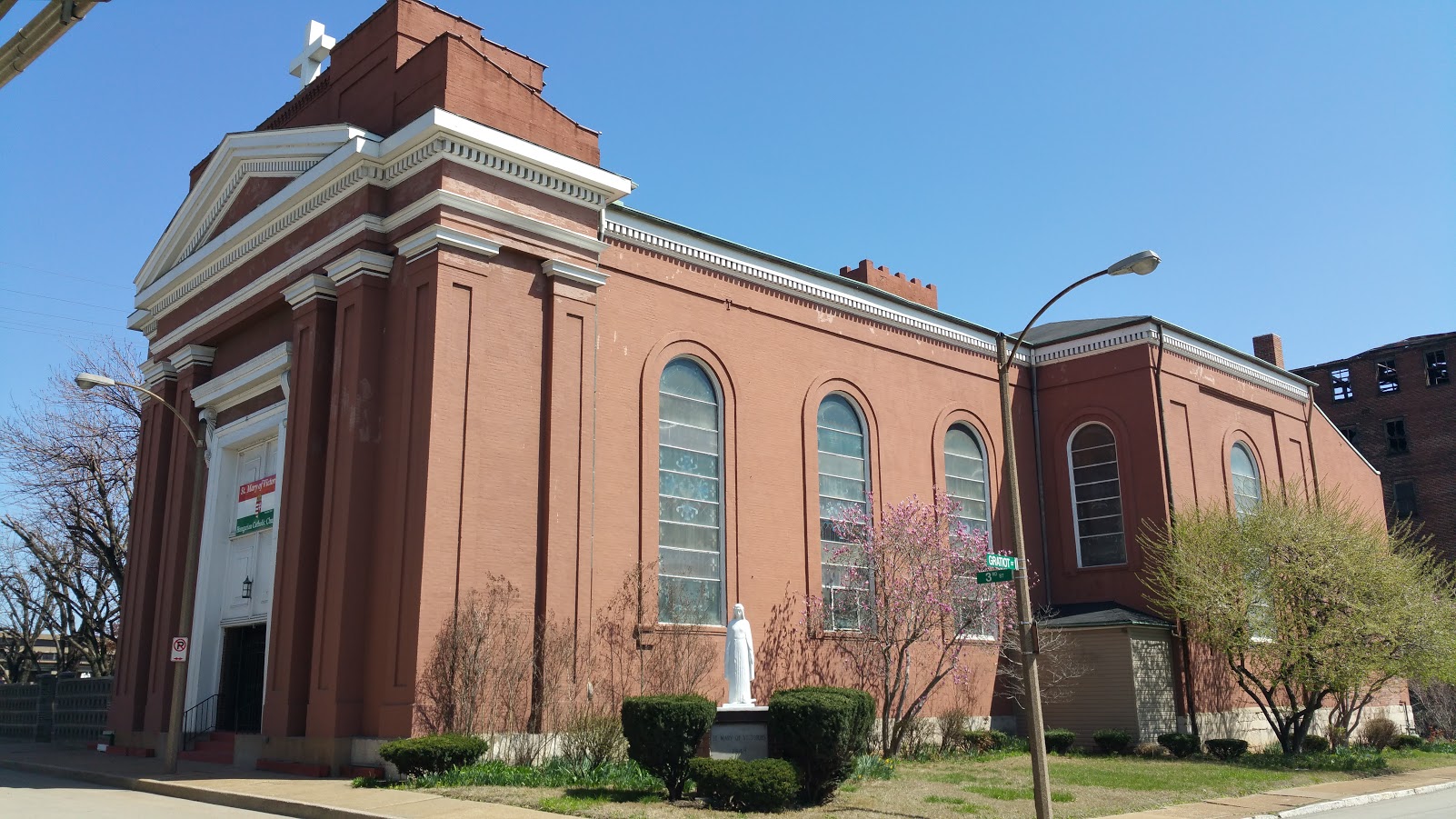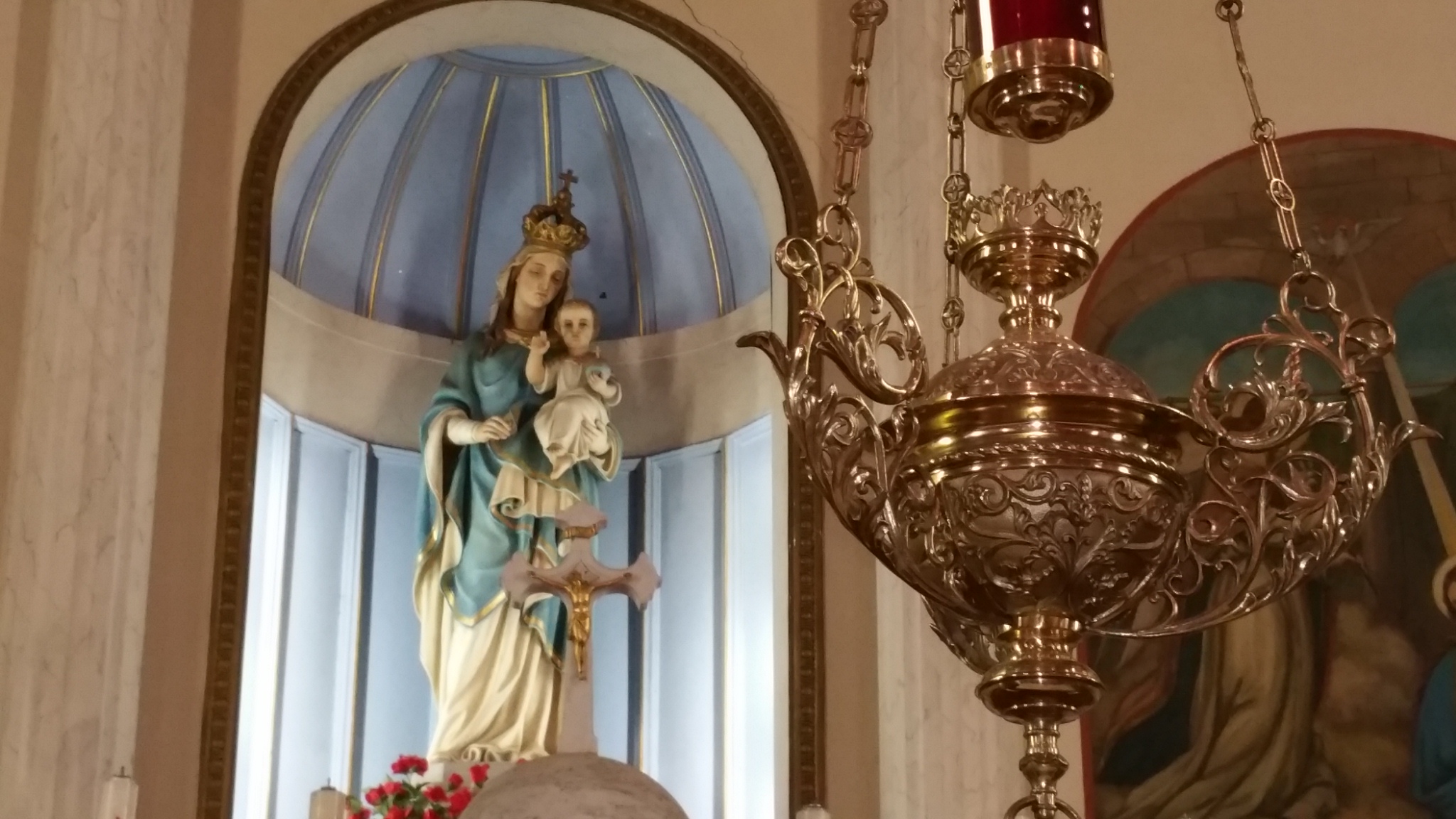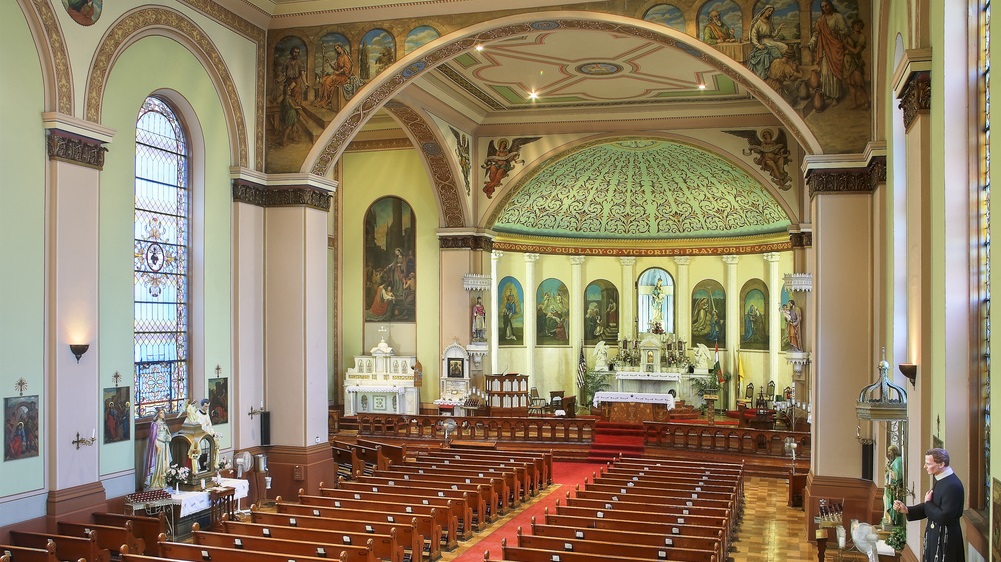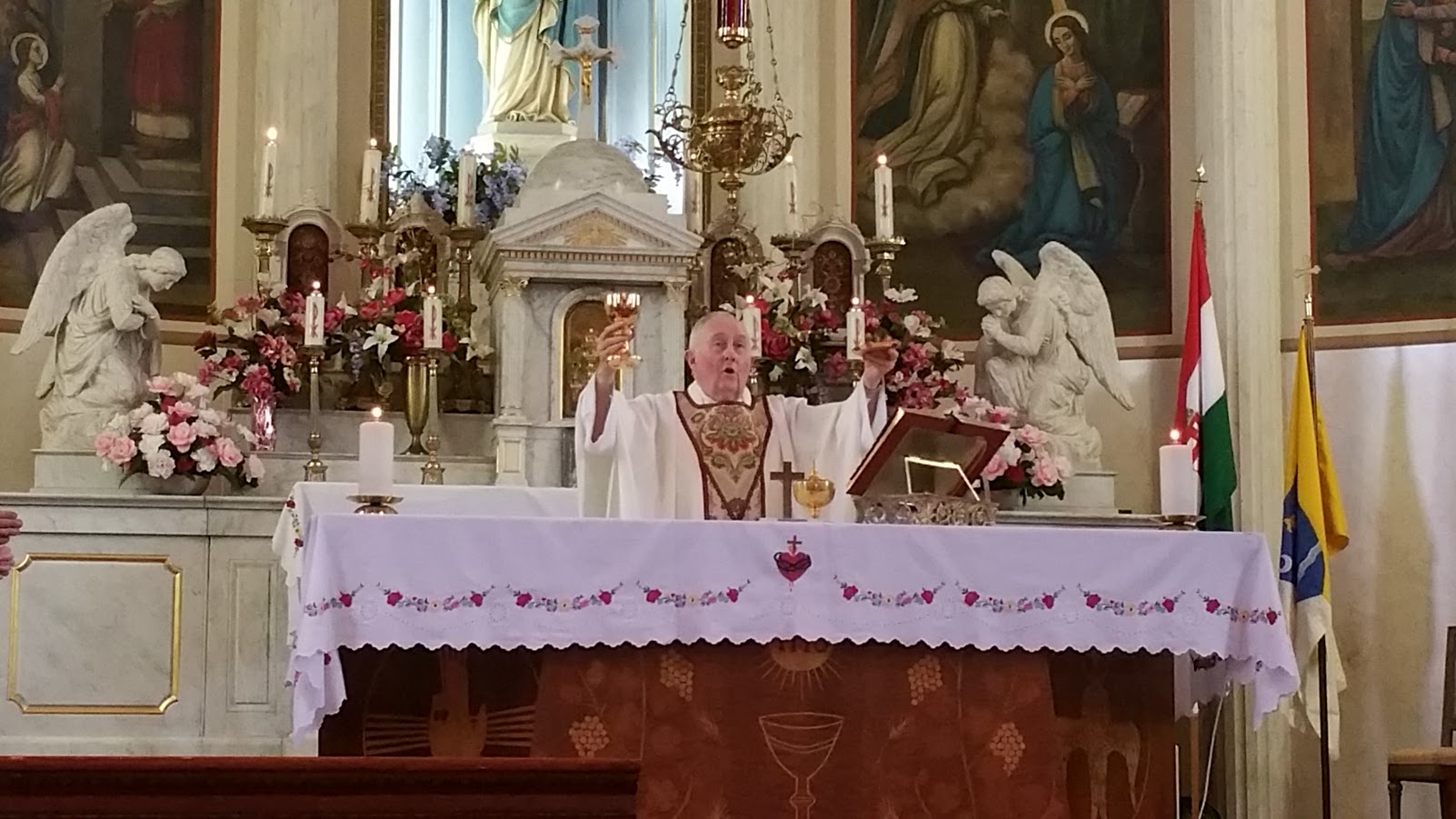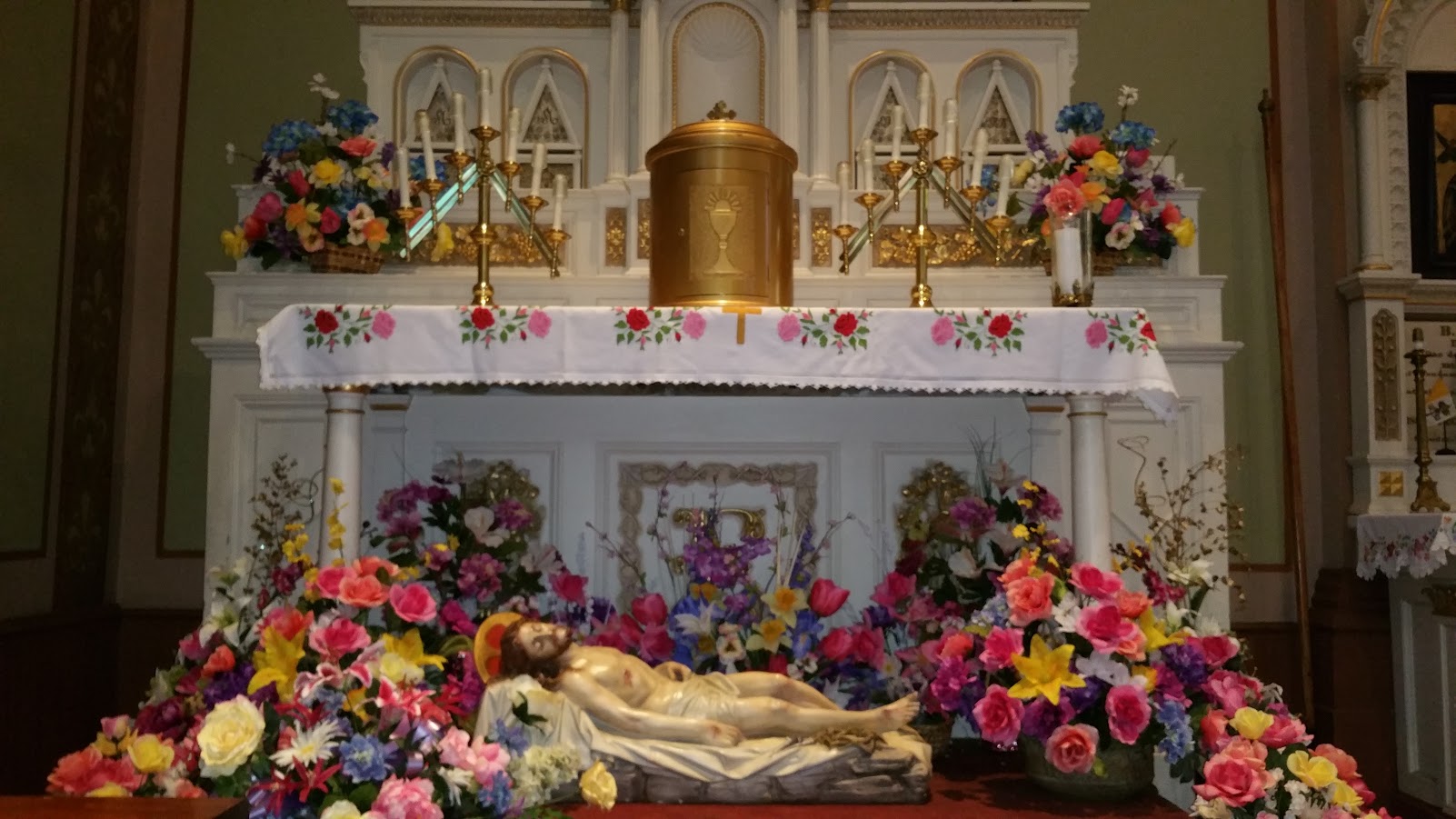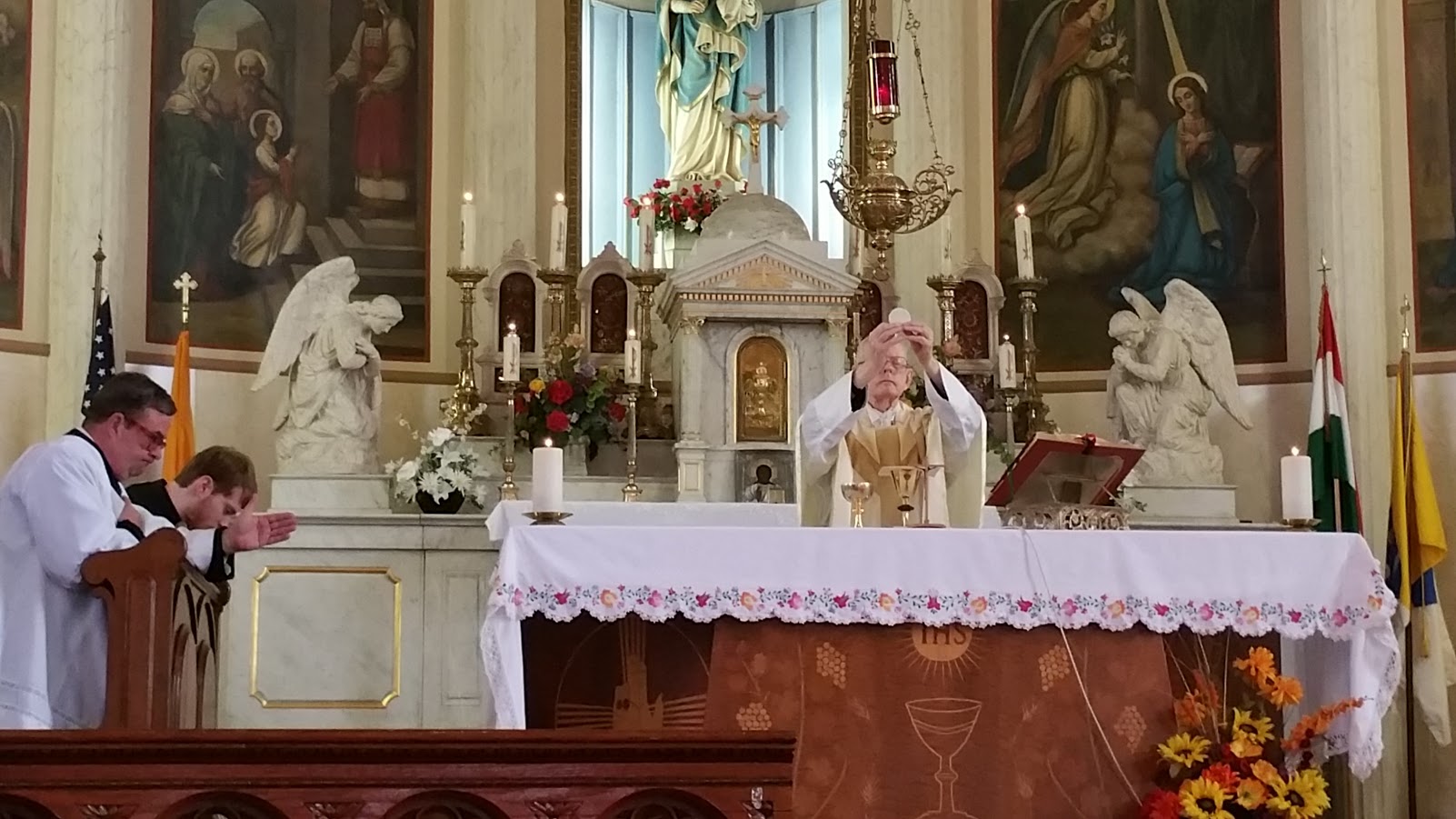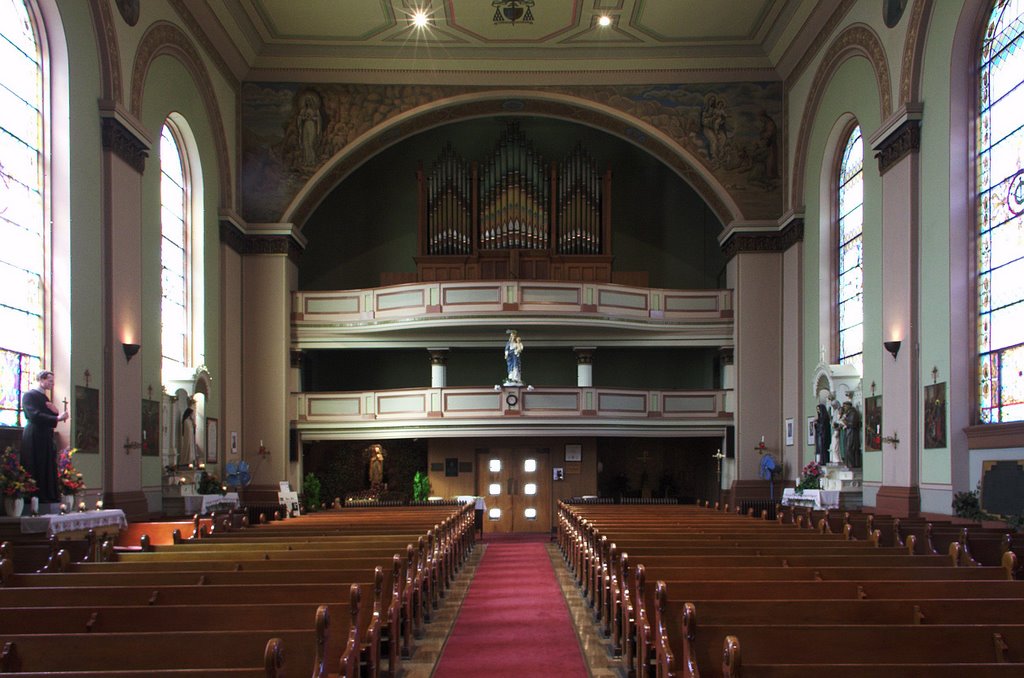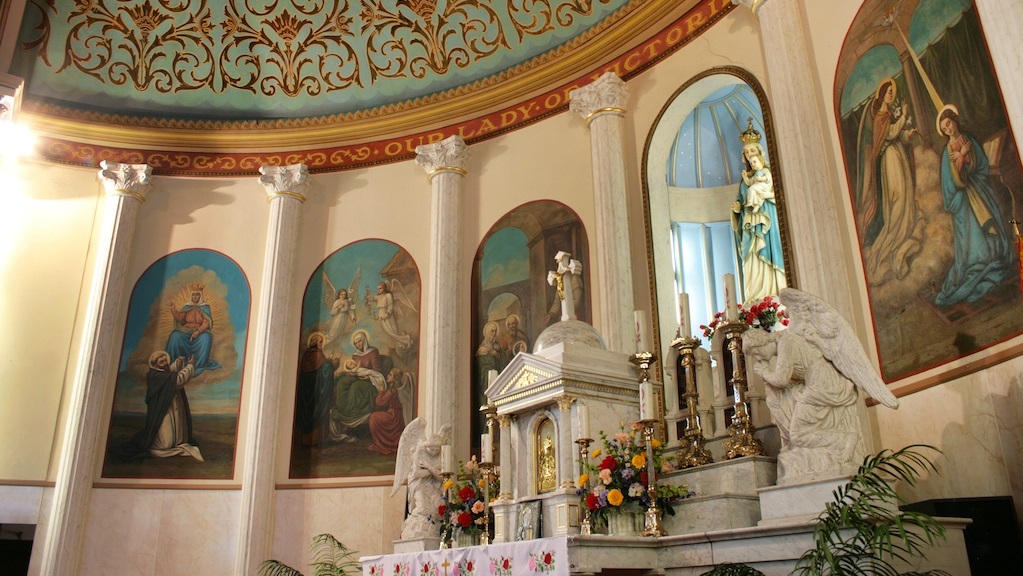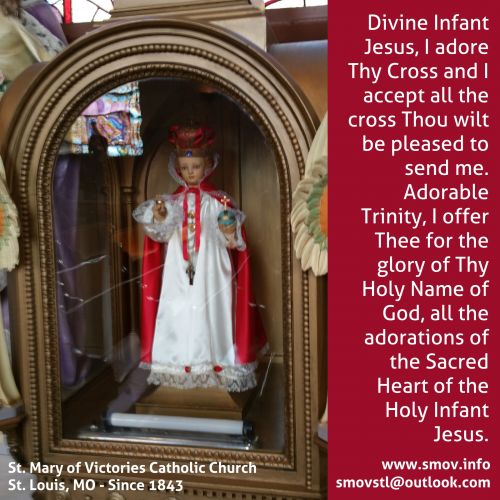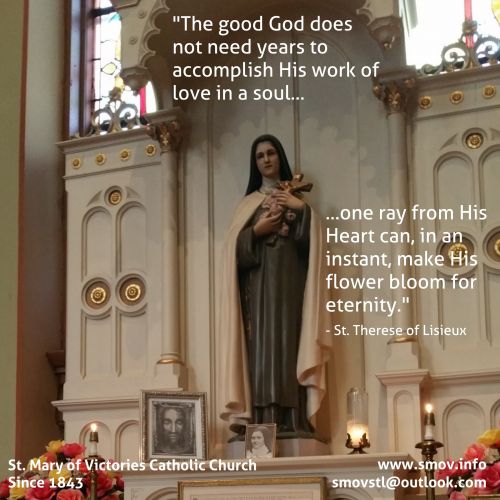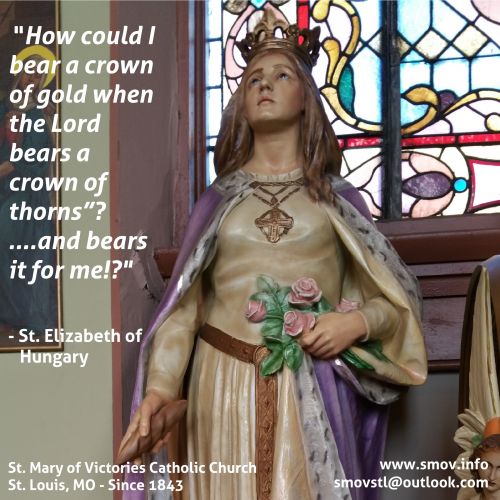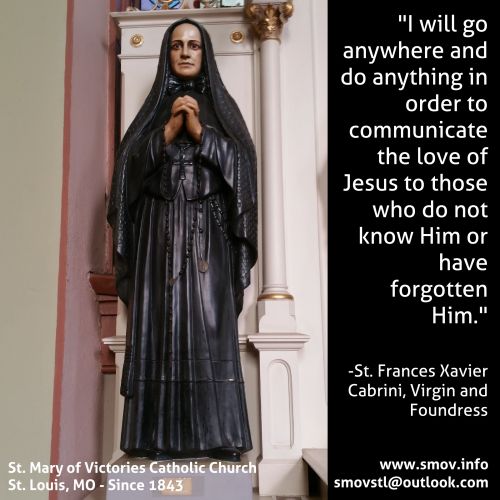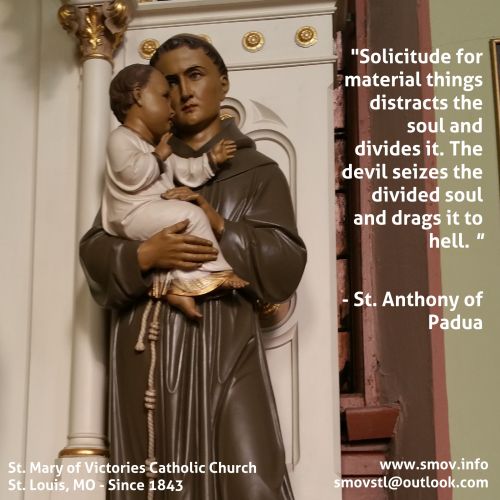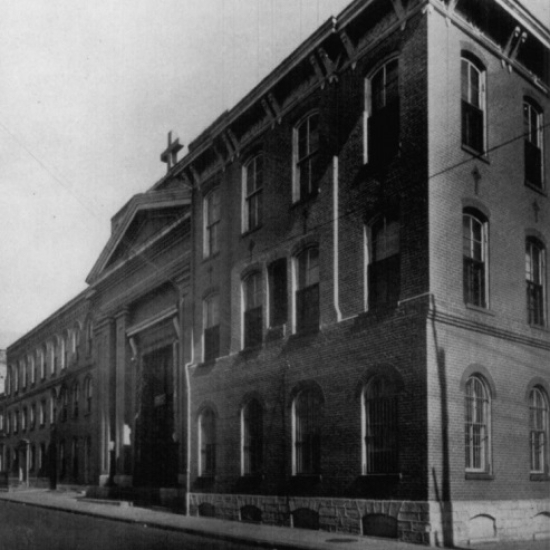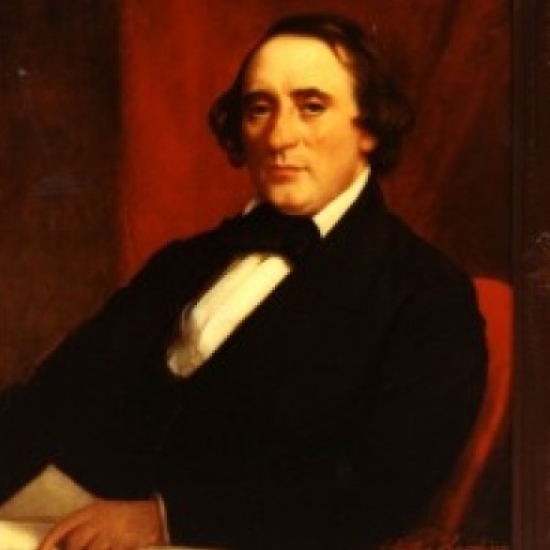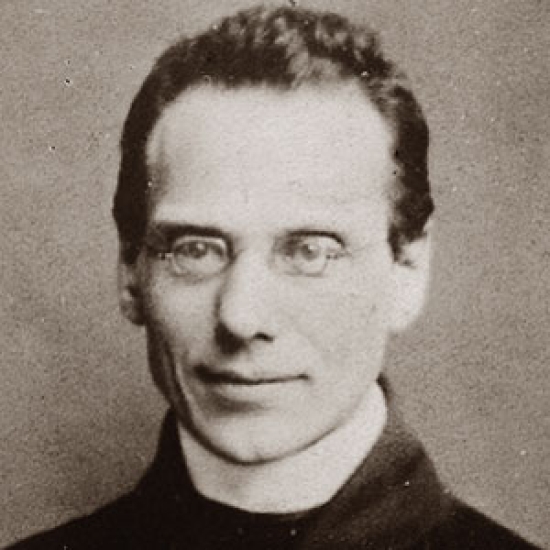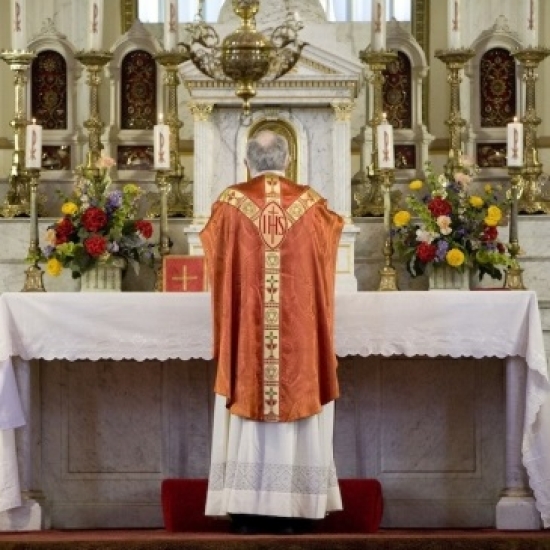10 August 2012, St. Lawrence, Martyr (8am, followed by Holy Hour)
Introit: Confessio et pulchritudo, begin on D (as mi)
Gradual: Probasti Domine, begin on B (as re) Woman sing V.; all join at *iniquitas.
Alleluia: Levita Laurentius, begin on D♭ (as fa) Men sing V., all join at *illuminavit.
Offertory: Confessio et pulchritudo, begin on F (as fa)
Communion: Qui mihi ministrat, begin on E♭ (as fa)
Recessional: Jesu dulcis memoria, PBC, p. 101. (Hymn from last Monday's Office of the Transfiguration (OF).
As befits one of the most beloved of the martyrs, this is one of the oldest feasts in the Roman rite, and even in the modern books many of the venerable proper texts have been preserved in both the Mass and the Office. The Introit has two phrases:
-
Confessio et pulchritudo in conspectu eius:
-
sanctitas et magnificentia in sanctificatione eius.
Sung in the vast and beautiful basilica which houses the tomb of St. Lawrence, this chant undoubtedly creates a lasting impression. As a matter of fact, the above text may quite possibly have been chosen with special reference to this beautiful structure, which was designated a basilica speciosior by Pope Pelagius II (578-590). In the 19th century, Pius IX effected many restorations on it and, after his death, was buried according to his express desire next to the relics of the holy archdeacon. Beautiful though the basilica may be, the soul of the saint is yet more noble and more precious. His life, his charitable undertakings, and above all his martyrdom, were a public avowal of his love for Christ, and continue to be a song of praise of wondrous beauty. His soul shone radiates the splendor and sublime magnificence of divine grace.
The melody has a youthful freshness and a dignified solemnity. With the former there is an upward tendency over confessio e d g a c c, over in conspec-(tu) e f g c c, over magnificen-(tia) f g a c c, and over (sanctifi)-catio-(ne) e f a c c. It employs variations of one motif only, meanwhile emphasizing high c, the dominant of the mode. On the other hand, the quiet seconds over (magnificenti)-a and the reverential halfsteps over sanctifi-(catione) connote solemnity. In conspectu eius, text and melody, is also found in the Introit of the Saturday before the second Sunday of Lent. So the high c should not overshadow the preparatory and following notes that form the melody proper.
The Gradual has two phrases in the corpus and two in the V.
-
Probasti, Domine, cor meum,
-
et visitasti nocte.
-
V. Igne me examinasti,
-
et non est inventa in me iniquitas.
The Benedictus antiphon of the morning Office is composed of a part of St. Lawrence's prayer: 'On the gridiron I have not denied You, O Christ.' The text of the Gradual continues this prayer. In truth, it was not an insignificant test that he underwent when he was scourged and tortured and subjected to a slow and extremely painful death on the glowing gridiron. Many others subjected to the same test failed to prove themselves, and after the dark night of pain there came for them the darker night of apostasy. The heart of St. Lawrence, however, burned with love for Christ; it rejoiced to suffer and give its all for Him. The saint's night knew no darkness, but radiated instead a wondrous light.
Today the saint looks back upon his martyrdom and sings this hymn to God. The corpus, with its lower pitch and range of c-c, according to some interpreters would first depict for us the saint's feeling of melancholy over his tortures, and later the feeling of joy over his triumph. Neither text nor melody, however, give occasion for this interpretation, although it is true and very obvious that in contrast to the corpus, the verse portrays a noticeable gradation of melody. The melody over cor meum recurs on the feast of the Assumption over justitiam, while that over visitasti seems to be entirely original. In the verse Igne is given effective emphasis. The florid melismas over the accented syllables of examinasti and inventa show the following close relationship: bag agf ace and fdb cag abec. The melody reaches its climax over et non est inventa, where, in an assured, we might almost say conscious, manner it rises stepwise to a height not frequently found in Graduals. It then descends in large intervals.
The Alleluia-verse has two phrases, in a fairly standard Mode 7 melody type:
-
Levita Laurentius, bonum opus operatus est
-
qui per signum crucis caecos illuminavit.
The Offertory has the same text, the same phrasing, with a major pause before the dominant of the respective mode, the same tonal range, and the same close on e as does the Introit. The two chants differ in character, however. High c, which permeates the Introit with is bright ring, occurs only once in the Offertory. In its place we have bistrophas and tristrophas on low f. In fact the entire piece is more deliberate, more reserved, more solemn. Similar sequences are repeated at (pulchritu)-do and (e)-jus, over the close of the first eius and the first half of the second eius, over (sancti)-tas and (magnifi)-cen-(tia). Rhythmical groups are likewise repeated. Thus, for instance, we find four groups of two and three over magnificenti-(a), and three groups of two and two with an emphasis on the pes over sanctificati-(one). The pes forms the arsis, while the clivis forms the thesis. This arrangement brings about a threefold undulatory movement, and serves as a preparation for the brilliant word accent to which three neumes give prominence.
The inner spiritual reality that transpires in the Eucharistic Sacrifice, which is directly introduced by the offering of the oblation, makes itself felt from the very outset. Thus the words of the Offertory tell us: the Eucharistic Sacrifice is the noblest hymn of praise and beauty (confessio et pulchritudo) that can be rendered to the Most High. According to the words of the Roman Canon, it renders to the Blessed Trinity all honor and glory. In this sacrifice the pure, holy (sanctitas), spotless sacrificial Lamb offers Himself. To the Church it represents the fountainhead of all the wonderful splendor (magnificentia) which she possesses in her saints, for from it they drew their "every heavenly blessing and grace" (Roman Canon).
The Communion antiphon has two short phrases:
-
Qui mihi ministrat me sequatur
-
et ubi ego sum illic et minister meus erit
This Communion is now assigned in the OF to the 5th Sunday in Lent (Year B), so we sang it earlier this year. In the EF, it is now assigned to the Common of a Martyr not a Bishop. It originated, however, with the feast of St. Lawrence. The text repeats the words of our Lord in today's Gospel. St. Lawrence was filled with a burning desire to imitate and follow his divine Saviour even unto death. As his bishop, St. Xystus, was being led to martyrdom, he was filled with an intense longing to make the supreme sacrifice with him whom he had so often served at the offering of the Eucharistic Sacrifice. Only then was he satisfied when told that after three days he should follow (me sequatur) in the footsteps of the martyred bishop. He went to his death and his heart rejoiced: "Now is my joy full," he said, "because I am become a martyr (hostia, victim) for Christ's sake."
With its range of an octave and a fifth, the melody of this short antiphon takes up to the heights, where Jesus is, then down to the depths of our own lowliness. But as Gospel source of our text reminds us, the first heights to which Jesus is lifted up are those of the cross, where he is the ultimate suffering servant of all. The exaltation of Christian service is ultimately that of the cross, which Lawrence willingly embraced. Ego rises in a solemn manner. Annotated manuscripts give the first four and the last two notes of this word the broad form, thereby knitting the melodic line more closely together. The pronounced upward tendency of the melody would depict for us Christ as enthroned above the clouds, elevated above all pain, sorrow, and persecution; and he who ministers to Him shall attain to these same heights. As if in joyful longing for that happiness, illic is given a comparatively rich melody. The low pitch of minister, however, reminds us that only humble service will realize this longing in us.
